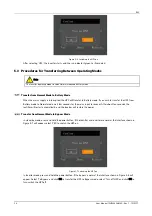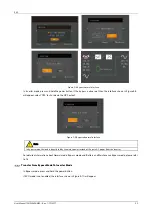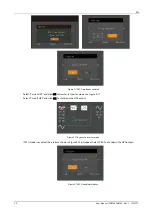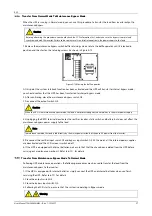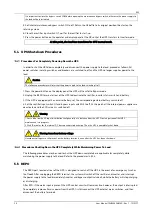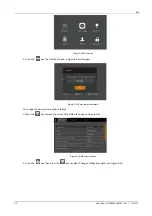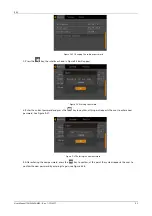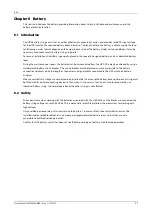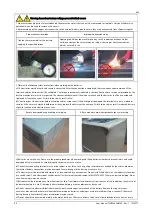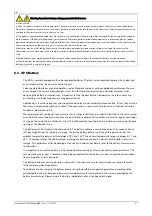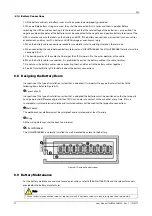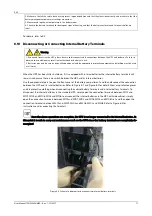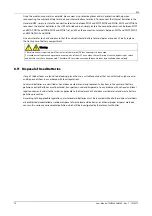
EXS
68
User Manual 10H52260UM60 - Rev. 1 - 10/2017
6.4
Precautions For Installation Design
Note
1. The precautions that must be applied when installing, using and servicing the batteries are described in the respective
battery manual provided by the battery manufacturer.
2. The safety precautions described in this section include important matters that must be taken into account when designing
the installation.
3. The design results may vary according to the local situation.
6.5
Battery Installation Environment and Number of Batteries
Installation Environment
Fresh air volume (EN50272-2001)
The battery operating environment must be well ventilated. During battery operation, the following fresh air
ventilation requirement must be satisfied:
Q=0.05 x n x I
gas
x C
rt
x 10
–3
[m
3
/h]
Where:
Q
=
The fresh air ventilation volume per hour, the unit is m
3
/h
N
=
Number of cells
I
gas
=
The gas evolving current density under battery float charging or boost charge conditions, the unit is mA/Ah
I
gas
=1, under the float charging condition of 2.27V/cell
I
gas
=8, under the float charging condition of 2.35V/cell
C
rt
=
20hr battery rated capacity
Temperature
Table 6-1 Ambient temperature range
Type
Temperature value
Note
Recommended
optimal temperature
20
°C
- 25
°C
The ambient temperature for the battery operation must not be too high or
too low.
If the average operating temperature of the battery rises from 25
°C
to 35
°C
,
the service life of the battery will be reduced by 50%. If the operating
temperature of the battery exceeds 40
°C
, the service life of the battery will
be reduced exponentially each day
Short time allowable
temperature
-15
°C
- 45
°C
The higher the temperature, the shorter the battery service life. At low temperatures, the charge/discharge
performance of the battery will be significantly reduced.
The battery must be installed in a cool and dry environment where the relative humidity is less than 90%, and must
be protected from heat sources and direct sunlight.
The ambient temperature, ventilation, space, float/boost charge voltage and ripple current will all affect the battery
temperature. Uneven temperature among the battery strings will cause uneven voltage distribution and thus
compromise performance. Therefore, it is very important to maintain a balanced temperature along the entire length
of the battery string, and to ensure that the temperature difference between batteries on different layers does not
exceed 3°C. Valve-regulated batteries are very sensitive to the temperature, therefore the working temperature
should be maintained between 15°C and 25°C. If the battery cabinet is installed near the UPS, the maximum design
ambient temperature shall be determined according to the battery rather than the UPS. This means that, if valve-
regulated batteries are used, the indoor ambient temperature shall be 15°C - 25°C rather than the operating
temperature range of the UPS modules. Provided the average temperature remains below 25°C, brief excursions in
excess of this value are permitted.

